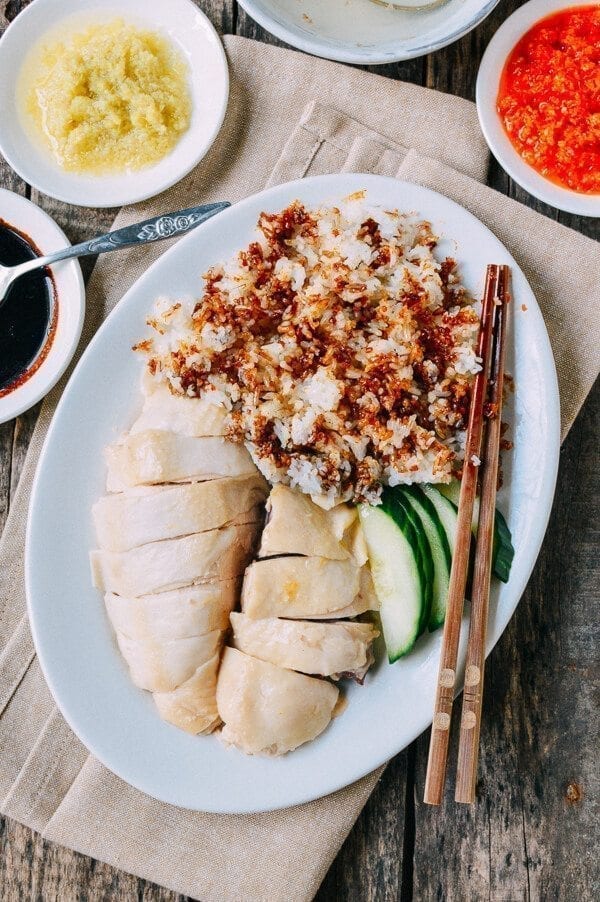 Hainanese Chicken Rice (海南鸡) originated––perhaps unsurprisingly––in Hainan, China, a tropical island located at the southern tip of the country. In recent years, it has become one of the top tourist destinations in China, probably due at least in part to the abundance of delicious plates of Hainanese chicken rice.
Hainanese Chicken Rice (海南鸡) originated––perhaps unsurprisingly––in Hainan, China, a tropical island located at the southern tip of the country. In recent years, it has become one of the top tourist destinations in China, probably due at least in part to the abundance of delicious plates of Hainanese chicken rice.
Hainanese chicken rice has become a famous dish (thanks, Anthony Bourdain!), but it’s especially popular in South East Asian countries like Singapore, Malaysia and Thailand. There are large populations of Chinese in these countries, and this dish crossed borders along with Chinese migrant workers.
While the chicken is undoubtedly a key component of the dish, I personally think the main event is the rice, which is cooked with chicken fat and chicken stock (from poaching the whole chicken). Normally, rice is cooked with plain water, so I can only imagine the reactions when people first taste this rice: eyes-popping and jaws dropping (to shovel in more of that rice, of course). It’s a luxury to cook rice using chicken soup, and the taste is better than plain white rice by a mile and a half.
As if the rice weren’t enough, the Hainan chicken is perfectly cooked, emerging from the stock pot (and then an ice bath) perfectly moist and silky. And on top of all that, you get to douse the whole thing in as much sauce as you want. In this case, there are three sauces: a chili sauce, a ginger sauce, and a sweet dark black soy sauce. This Hainanese chicken rice recipe takes some concentration and a little elbow grease, but the results are well worth the effort!
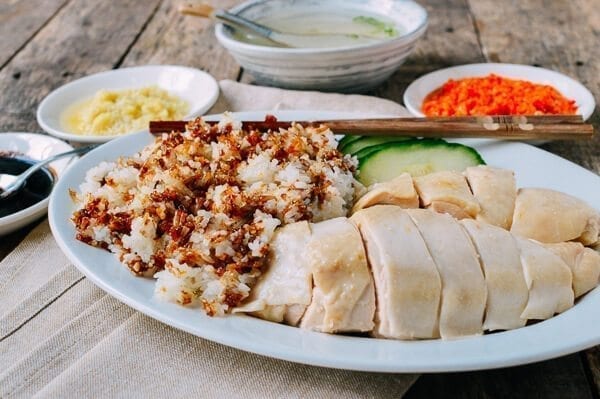
For the Hainan chicken:
- 1 whole fresh (or organic) chicken, 3-3½ pounds
- 1 tablespoon salt
- 12-14 cups water
- 4-5 slices ginger
- 2 whole scallions
- Ice
Wash the chicken clean and remember to set aside the piece of chicken fat at the back cavity. Transfer the chicken to a plate and pat dry with a paper towel. Lightly rub the chicken with the salt. This will give the chicken skin a nice sheen. Set it aside.
Bring the water, along with the ginger and scallions, to a boil in a large stockpot. Before adding the chicken to the pot, rinse the chicken under running water to wash away the salt. Carefully lower the chicken into the boiling water, positioning the chicken breast-side up. Now is a good time to adjust the water level so the chicken breast just pokes above the water (so you aren’t left with dry white meat).
Once the water boils, carefully lift the chicken out of the water to pour out the colder water that is trapped in the cavity. Carefully lower the chicken back into the pot. Bring the water to boil again, and cover the lid. Turn off the heat, and leave the pot, covered, on the stove for 45-50 minutes (set a timer). To check if the chicken is done, stick a toothpick into the thickest part of the drumstick; if the juices run clear, it’s cooked through. The chicken in this Hainanese chicken rice recipe is very similar, if not identical, to how you cook Cantonese poached chicken.
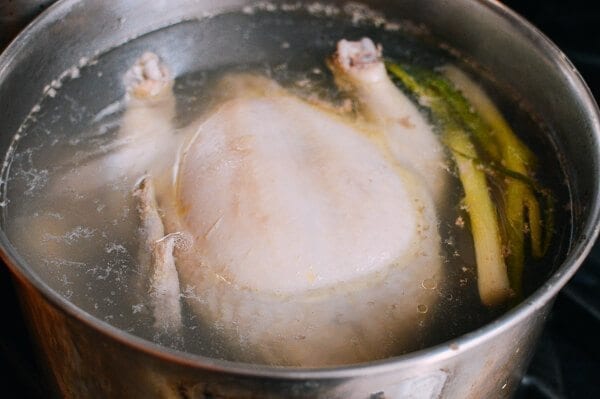
When the 45-minute timer (for the chicken) is almost up, prepare a large ice bath. Once the chicken is cooked, carefully lift the chicken out of the pot, drain the water from the cavity and lower it into the ice bath. Take care not to break the skin. After 15 minutes in the ice bath, the chicken should be cooled, drain completely and cover with clear plastic until ready to cut and serve. The ice bath stops the cooking process, locks in the juices, and gives the chicken skin better texture.
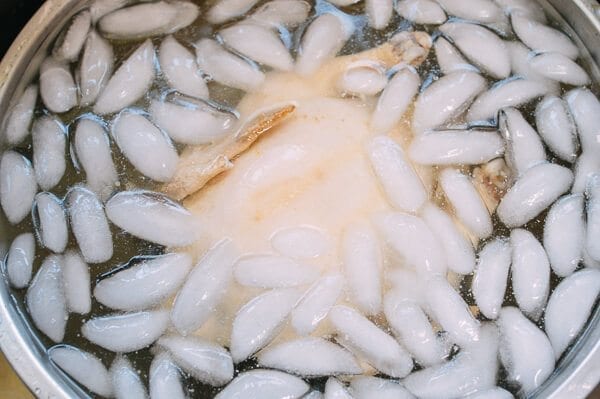
Trust us.
To cook the rice:
- Chicken fat, taken from the back cavity of the chicken
- 4 cloves of garlic, minced
- 3 cups of white rice, preferably jasmine rice, washed and drained
- Chicken stock, from cooking the chicken
- 2 teaspoons salt
While the chicken is cooling, make the rice. Heat a wok over medium heat. Add the chicken fat and render for about a minute. Stir in the minced garlic and fry briefly, making sure it doesn’t burn.
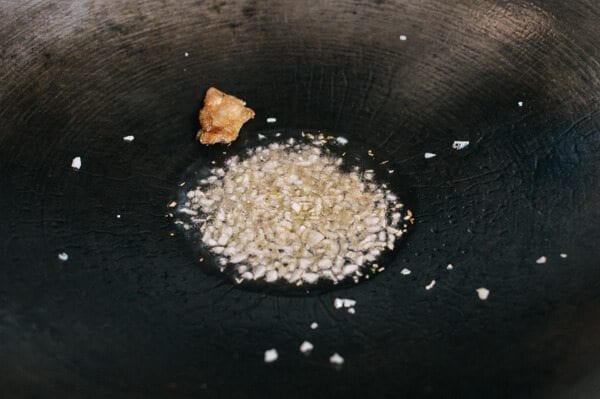 Add the uncooked rice. Stir continuously for about two minutes
Add the uncooked rice. Stir continuously for about two minutes
Turn off the heat. Scoop the rice into your rice cooker and add the appropriate amount of chicken stock (instead of the usual water. This amount may vary depending on your rice cooker) and salt. Close the lid and press START.
If you don’t have a rice cooker, you can follow these steps. When you wash your rice, let it soak for an additional 20 minutes. Then drain the rice and follow the same steps above, but instead of transferring the rice mixture to your rice cooker, transfer it to a medium/large pot. Add 3 cups of chicken stock and the salt, giving it a quick stir. Cover the pot and bring to a boil. Once it boils, immediately turn down the heat to the lowest setting. Let the rice simmer and cook (covered) for 10-15 minutes until the rice is done. It’s not quite as foolproof as the rice cooker, but you should get a very similar result. Just be sure to keep an eye on it; burnt rice is no fun.
While the rice is cooking, let’s prepare the three signature dipping sauces. You can also start preparing these sauces while the poached chicken is cooking in the pot.







